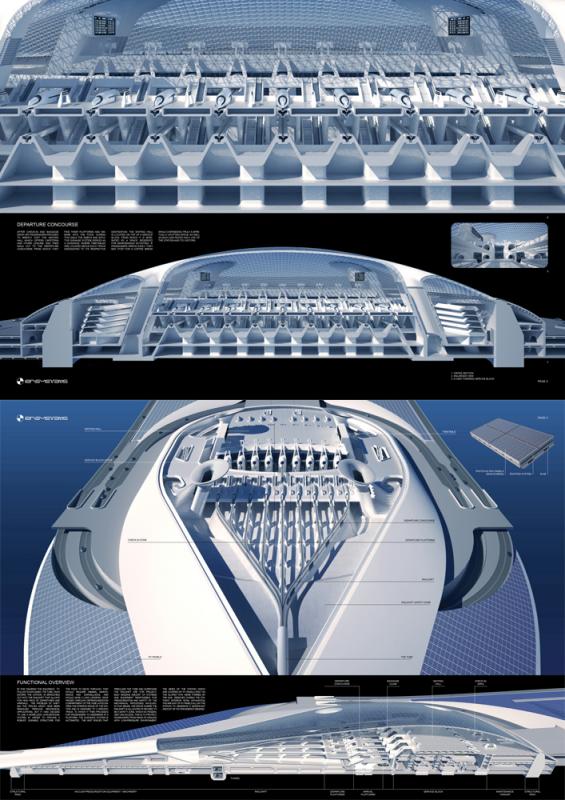Hyperloop Station
For the Hyperloop transportation system proposed by Elon Musk in 2013, Rustem Baishev of RB Systems presents an integrated design vision both for a station and passenger pod. As the technology is only being developed, the station’s design is as of now speculative, not tied to a specific location and is aimed to formulate and invent spatial and programmatic concepts for such an unprecedented typology. With firm belief that passengers' and pods' logistics will be the factors of an utmost influence, the station’s form and layout were thus dictated by purely functional considerations. The building’s architecture exhibits innovative, sleek design, that employs latest strategies in energy efficiency. The glass dome resolved as an experimental structural system of a uniform space-truss that rests on a perimeter ring, and is assembled of prefabricated fiberglass units which are light enough to allow for spans of 100 meters at the greatest. The interior space is intended to celebrate and generate excitement for travel using a forefront technology, and is therefore expansive, filled with light and exhibits a space-age aesthetics. An integrated design approach unifies the system with a common visual characteristic throughout the entire range of elements.
![[RB Systems - Hyperloop Station - COVER IMG]](https://architectureprizecom.s3-us-west-2.amazonaws.com/uploads/91346/large_1505950461.jpg)



